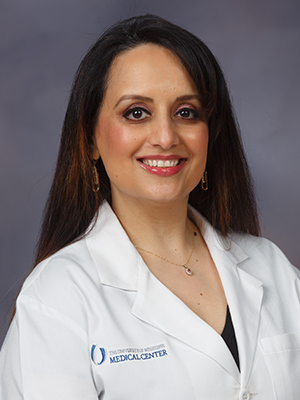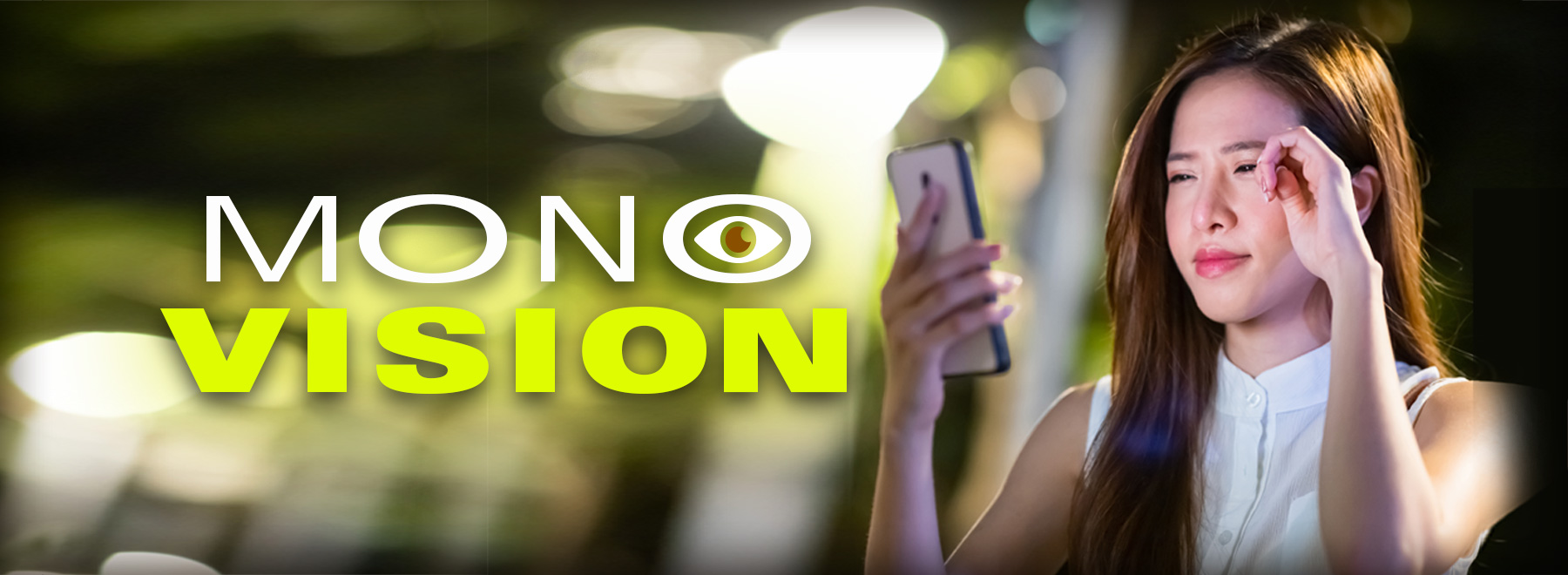New technique helps older adults combat presbyopia
You’re older than 40. Chances are, your eyes just aren’t as good as they used to be.
When the aging process makes it harder to focus on objects that are close to you, it can signal the onset of a condition called presbyopia. The resulting struggle to read menus, books, a lipstick tube or even your wristwatch can be frustrating and have you reaching for reading glasses – or even a hand-held magnifying glass.
However, providers at the University of Mississippi Medical Center are offering treatment to help such patients achieve what’s called monovision, or blended vision.

“As I like to tell my patients, presbyopia, or ‘old eyes,’ happens with the accumulation of birthdays,” said Dr. Roya Attar, an assistant professor of ophthalmology at UMMC. “It’s a natural course that happens to you, including a lot of people who have seen great all of their lives.”
Losing your “near” vision is a very slow process, said Attar, the Medical Center’s first faculty optometrist.
“We start to lose focusing power and glasses aren’t always convenient. It’s a constant on and off with glasses.
“It can be very frustrating. That’s why we sometimes see people wearing readers on the tip of their nose. They look down through them to read.”
Attar treats presbyopia patients with contact lenses that correct distance vision in their dominant eye, but intentionally leave the other eye somewhat nearsighted to allow the patient to see objects close up. One eye is set up for distance, the other is set up for close range.
The eyes then work together so that the patient can see clearly from any distance. That’s monovision.
That’s not to say there’s anything wrong with reading glasses, Attar said, but “if you want to be glasses-free, monovision is a great choice.”
“The concept is that we all have a dominant eye for distance vision, similar to a dominant hand. That one eye is corrected for distance perfectly, and our non-dominant eye is used for near.”

Heather Griffith, one of Attar’s patients, said she had some hesitancy before trying monovision.
“I was afraid that I wouldn’t be able to adjust and that there was no way my brain would do it,” she said.
Instead, “it was literally less than 24 hours before I was used to it,” said Griffith, an executive assistant in the office of Dr. LouAnn Woodward, UMMC vice chancellor for health affairs.
“I forgot that they were even in my eyes.”
An added benefit, Griffith said, is that her eyes are no longer dry.
“In the right eye, the distance is brilliant,” she said. “I absolutely love the monovision as compared to multifocal contacts.”
Multifocal contacts operate similarly to those used to achieve monovision, but they are sometimes better suited for patients who are happy wearing glasses. Multifocal contacts correct for both distance and near vision. While they produce excellent results for some patients, others say their near vision suffers if their distance vision is extremely clear.
When first considering monovision, “patients are usually apprehensive,” Attar said. “One way to make sure it’s successful is to be sure that you have the dominancy of one eye correct. That’s very important.
“When you see people close one eye, they are honing in with their very dominant eye.”
Although monovision is Attar’s preferred form of correction for presbyopia, it isn’t for everyone, and some people may find they can’t adapt to contact lenses if they’ve never tried them before. Other options to achieving monovision include surgery to correct presbyopia, such as LASIK or artificial lens implants called intraocular lenses.
“The people who really appreciate monovision are those with an active lifestyle,” Attar said. “Cyclists, for example, need to look at something near in addition to distance.
“Monovision contacts are wonderful for that. You can also put on a pair of polarized sunglasses with monovision. You can’t do that if you are wearing readers. A lot of athletes appreciate that.”
Monovision contacts also are more cost-effective, she said.
“There are more options on contact lens materials and modality, in comparison to multifocal contacts.”
Attar recently received the Helen St. Clair OD of the Year Award from the Mississippi Optometric Association for outstanding contributions to the profession of optometry and visual welfare for Mississippians. At UMMC, she performs timely eye examinations and makes full glasses and contact lens optical services available to patients. She provides front-door treatment for patients having an acute problem and makes determinations on whether a patient also needs to see an ophthalmologist.
Griffith said she appreciates Attar working with her to try multiple sets of contact lenses until they found the ones that were perfect for her.
“She is phenomenal,” Griffith said. “She definitely cares about you and your eyes. As many times as you need to switch contacts, she’s right there for you.
“Monovision is going to work for me. I love it.”
To discuss eye and vision needs or to make an appointment with a provider at the UMMC Department of Ophthalmology, call (601) 984-5020.
The above article appears in CONSULT, UMMC’s monthly e-newsletter sharing news about cutting-edge clinical and health science education advances and innovative biomedical research at the Medical Center and giving you tips and suggestions on how you and the people you love can live a healthier life. Click here and enter your email address to receive CONSULT free of charge. You may cancel at any time.



